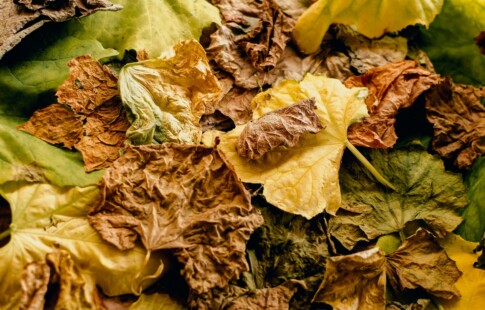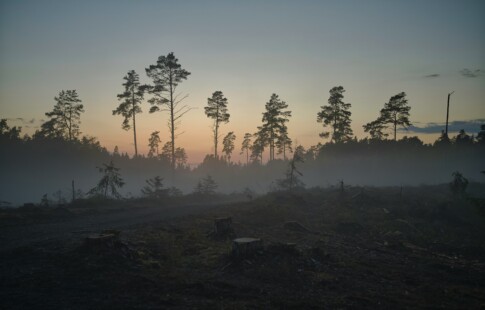
6 Elements of a Backyard Sustainable Garden
We are reader-supported. When you buy through links on our site, we may earn affiliate commission.
You might have guessed a backyard sustainable garden is beneficial for the planet. Your typical tree removes 25 kilograms of carbon dioxide from the air each year. However, the other choices you make matter just as much.
Are you spending a fortune watering a lawn that invariably needs cutting each week? Do you spend a bundle on expensive fertilizers and pesticides? You could be saving money while treating the planet more kindly. Here are six elements of a backyard sustainable garden to include in your landscaping plan.
1. Xeriscaping Principles
What is xeriscaping? This eco-friendly element of a backyard sustainable garden involves selecting native plants that require little maintenance to adorn your landscape. It also has multiple advantages that delight homeowners:
- It saves money: Think about the small fortune you spend each year reseeding and fertilizing your lawn. That’s not the end of your woes. You have to keep it watered and weed-free. Xeriscaping requires you to spend far less to maintain it.
- It saves time: Do you enjoy spending every sunny Saturday chained to responsibilities for yard work? Who does? Xeriscaping doesn’t only minimize maintenance costs; it lets you cut the lawnmower cord.
- It increases your property value: Let’s face it, most homebuyers don’t want to dedicate their weekends to lawn maintenance any more than you do. They’ll pay a premium for beautiful landscaping that doesn’t require much work.
- Less noise pollution: Leaf blowers had to be invented by Old Scratch himself. There’s nothing like their roar to disturb a sleep-in Saturday. Lawnmowers aren’t much quieter.
- No fertilizer or pesticides necessary: Because xeriscaping uses native plants, there’s no need for you to enhance the soil to support unfamiliar growth. It’s also naturally resistant to indigenous pests.
- Conserves native flora: There are fewer wild places in the world. Xeriscaping preserves species that might otherwise go extinct as agriculture and industry continue to encroach on habitats.
2. Soil Conservation Practices
If you want your backyard sustainable garden to regrow year after year, you have to maintain your soil quality. Fortunately, the best techniques for doing so also benefit the planet when done right.
Crop rotation is a classic method of soil conservation. It consists of planting root crops one year, grains the next two and forage plants for three years after that. This method restores the soil aggregates destroyed by potatoes and carrots, replenishing vital nutrients.
Other soil conservation methods include planting trees, shrubs and cover crops to protect the soil from erosion over the winter. No-till farming methods also conserve soil integrity — consider using a broadcast seeder for large plantings.
3. Compost
Composting is another way to enhance soil quality while minimizing your carbon footprint. While organic matter eventually breaks down into soil, the conditions in landfills aren’t ideal for doing so. As a result, these facilities produce tons of methane, a greenhouse gas far more destructive than carbon dioxide.
Fortunately, you can build a bin on the cheap — even for free. All it takes is a hammer, nails and some repurposed wooden pallets from your local hardware store.
The trickiest part is learning what does and doesn’t belong inside. The following items are okay to include:
- Plant-based food scraps (no meat)
- Newspaper
- Plain (not glossy) paper
- Unbleached tea and coffee filters
- Leaves and large debris (cut up large branches)
- Vegetarian pet bedding (hamsters, horses)
- Natural (not synthetic) textiles.
However, you should exclude the following as it won’t break down and may contaminate the soil:
- Meat scraps
- Pet food
- Non-vegetarian pet bedding and waste (dogs, cats)
- Synthetic or chemically-laden woods and textiles
4. Natural Pest Control
You can undo many of your sustainability efforts by spraying toxic pesticides all over your landscaping. Worse, certain products can make you sick if used in the garden and not washed off thoroughly before consumption. Natural, organic pest control measures are best.
For example, you can use ladybugs to devour aphids and keep your precious rose bushes safe. Soft-bodied insects smother under a bath of canola oil and ivory soap, and dichotomous earth takes care of earwigs and slugs. A bit of baking soda and water stops fungal diseases, and you can cure powdery mildew with water and milk.
5. Wise Water Use
Introducing xeriscaping elements will reduce your water use, especially if you redo your entire lawn. What else can you do to cut back on this precious resource?
If your jurisdiction allows it, why not gather rainwater? It doesn’t take much more than a barrel to provide sufficient moisture for your garden.
What if you must irrigate because you live somewhere like the desert southwest? In such cases, choose a system with a smart timer that shuts off the flow when it isn’t needed.
6. Plant Propagation
This final tip might not reduce your carbon footprint much as others on this list. Nevertheless, it saves you trips to the nursery, reducing emissions. It also keeps more cash in your pocket.
Instead of buying plants, learn how to grow baby ones by saving the seeds from the produce you buy. Although it’s trickier with certain veggies, cucumbers, beans, peppers and tomatoes work well.
Another idea for increasing your crops without running to the store is to share plant clippings with your friends and neighbors. For example, you can grow many soft herbs from cuttings — sometimes, the fresh variety you bring home from the grocers’ will sprout if placed in water.
Elements of a Backyard Sustainable Garden
The race is on to save the planet, and your landscaping choices can help. What should you do to make your garden greener?
Incorporate the six elements of a backyard sustainable garden into your planting plans. You’ll enjoy more money, time and the satisfaction of knowing you’re doing the right thing.
Share on
Like what you read? Join other Environment.co readers!
Get the latest updates on our planet by subscribing to the Environment.co newsletter!
About the author

Steve Russell
Steve is the Managing Editor of Environment.co and regularly contributes articles related to wildlife, biodiversity, and recycling. His passions include wildlife photography and bird watching.





